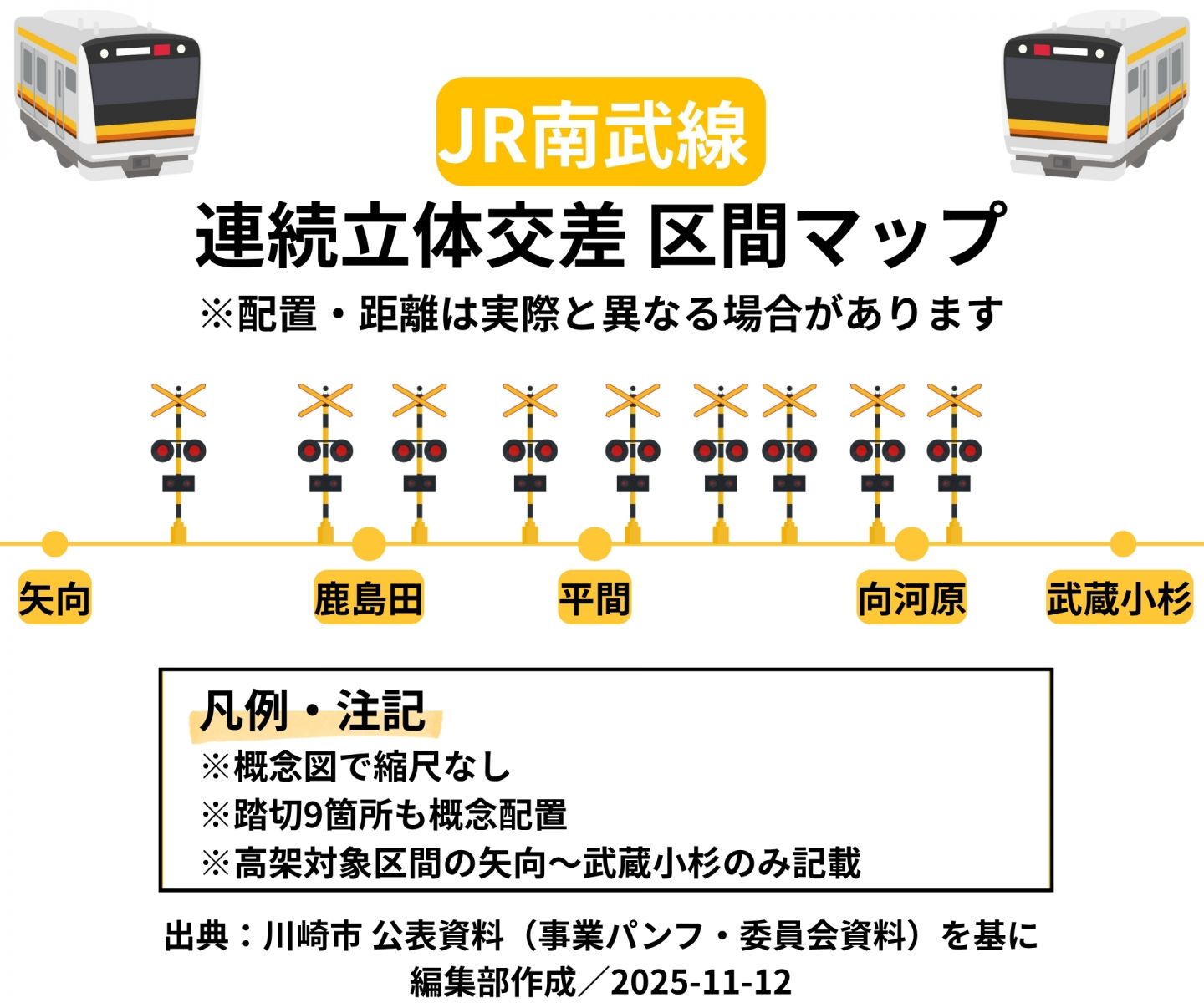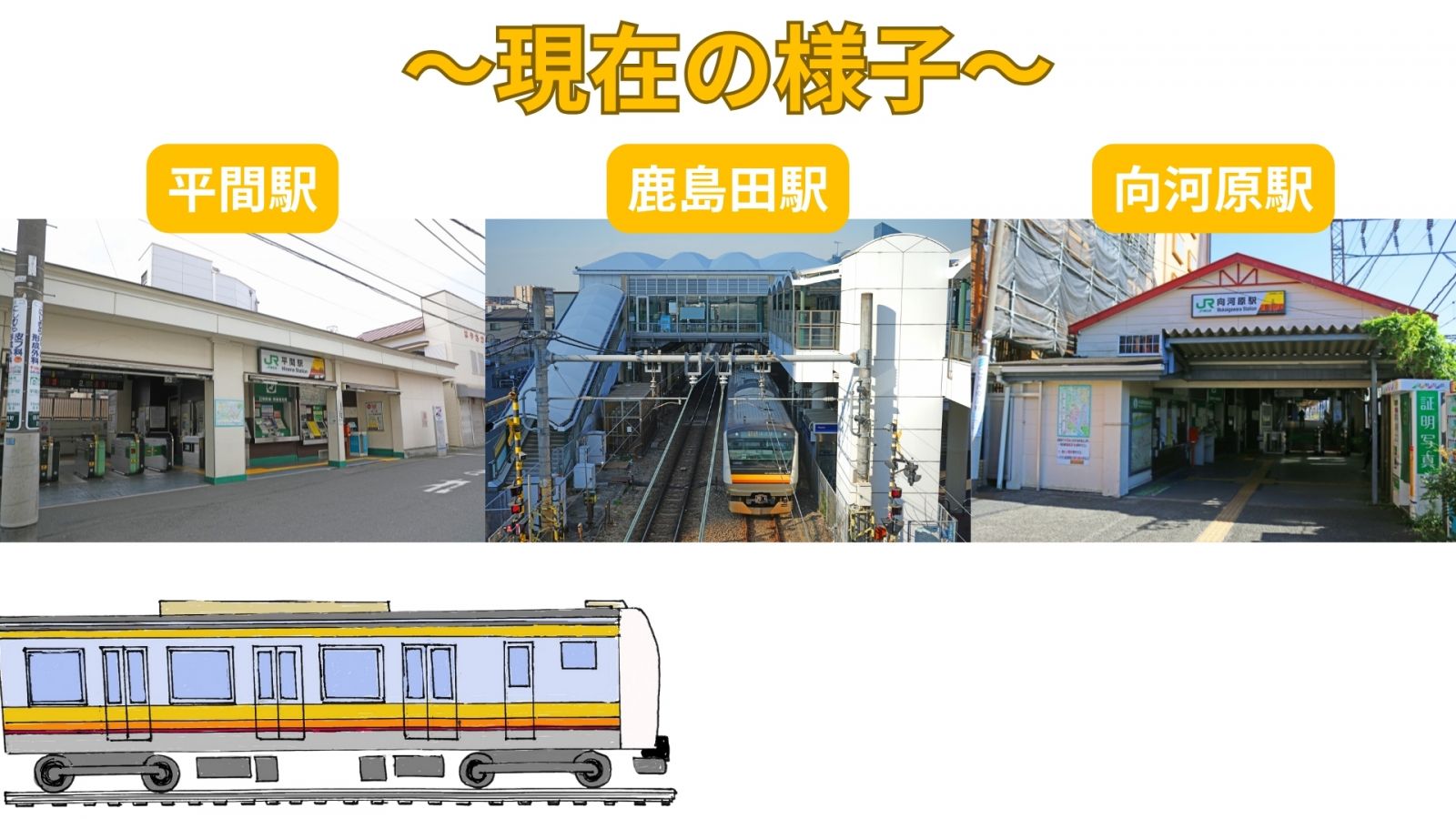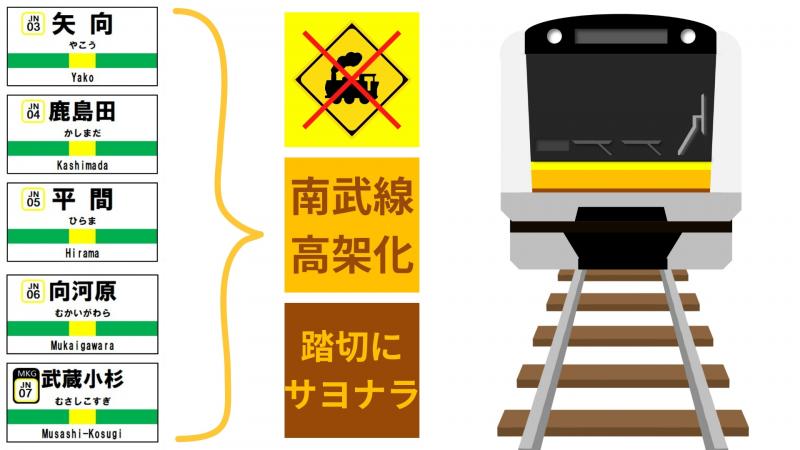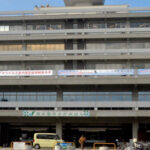“Clang, clang, clang…”
The familiar warning sound echoing around Hirama Station and Kashimada Station in Kawasaki City.
During the busy morning hours, when you think you’ll make it to work or school with just minutes to spare, the crossing gate slowly descends right before your eyes.
As you watch Nambu Line trains pass one after another, you’ve probably sighed, “Not again…” – if you live along this line, this has likely happened more than once or twice.
The so-called “never-opening railway crossing” that can remain closed for up to 51 minutes out of every hour during rush hour.
This crossing not only steals our precious time but also stops the flow of traffic in the city and obstructs emergency vehicles, posing significant safety challenges.
However, there’s finally an end in sight for this long-standing problem!
A grand project to elevate the entire JR Nambu Line that runs through Kawasaki City up into the sky.
The “Continuous Grade Separation Project” has finally officially begun.
This isn’t just ordinary track construction.
It’s the beginning of a major story that will transform our daily lives and the city’s future into something safer and more comfortable.
Tracks to the Sky! The Future Cityscape Without Railway Crossings
The goal of this project is very simple.
To completely eliminate all 9 railway crossings along the approximately 4.5km section from Yako Station to Musashi-Kosugi Station.

Because trains run at ground level, railway crossings are necessary.
So why not elevate the tracks instead?
With this shift in thinking, our city will change dramatically.
◆ No more waiting at railway crossings!
No more morning frustration or worries about being late for appointments.
Cars and buses will flow smoothly, and children’s routes to school will become much safer.
◆ Stations will become new and more user-friendly!
Hirama Station, Kashimada Station, and Mukogaoka Station will be reborn as modern, open elevated stations.
The north and south sides of the stations, previously divided by tracks, will become freely accessible, restoring a sense of unity to the entire city.

◆ New spaces will be created under the tracks!
Spacious areas will emerge beneath the elevated tracks.
These could become stylish cafes and shops, parks where children can play, or convenient bicycle parking areas.
The space where tracks once ran holds the potential to become new centers of activity.
Wisdom Behind the Magic! The New Idea That Saved “21.4 Billion Yen” and “5 Years”
For such a massive project, enormous costs and time are to be expected.
Under the initial plan, the total project cost was estimated at approximately 160.1 billion yen, with completion expected to take about 21 years.
“I’d be happy when it’s finished, but that’s so far in the future…”
Just as people were thinking this, Kawasaki City announced a surprising idea.
This was the shift to the “Parallel Elevated Construction Method,” which completely changes the construction approach.
This gets a bit technical, but it’s like changing how you solve a puzzle.
・Traditional Method (Temporary Track Elevated Construction):
First, create “temporary tracks” next to the current tracks and run trains on them, then build the elevated structure in the cleared space.
Once completed, move trains to the new elevated tracks, and finally remove the temporary tracks – a labor-intensive method.
・New Method (Parallel Elevated Construction):
First, build the “actual elevated structure for the downbound line (toward Tachikawa)” right next to the current tracks.
Once downbound trains start running there, use the space of the old ground-level tracks to build the elevated structure






